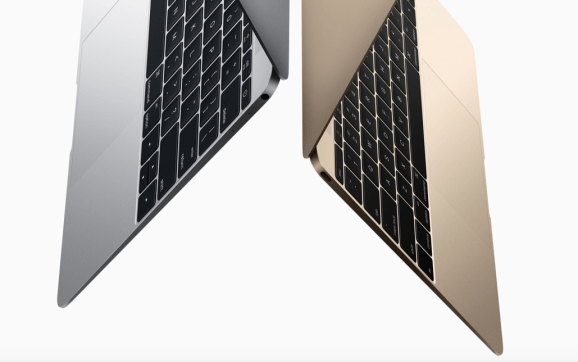
When Apple announced its new MacBook last week, I was initially excited.
A Retina display — with resolution of 2,304 by 1,440 pixels — and a hugely promising 9 hours of battery life with active Web use sounded like exactly what I wanted. Plus, it weighs only slightly more than an iPad, at just 2 pounds. A nicer keyboard and a “force touch” trackpad are nifty add-ons, if not anything anyone had actually asked for.
Even the USB-C port didn’t bother me much. I’m actually a huge fan of USB-C, partly because it finally addresses the age-old problem with USB ports: Lack of symmetry. As everyone who has ever used one can attest, there’s a huge usability flaw with USB, in that you have to plug it in with the correct side up, but there’s not an easy way to tell which is the correct side without looking closely at the plug and the receptacle. The USB-C connector, by contrast, is reversible, so you can plug it in whatever way you want.
More than that, USB is quickly turning into a nearly ubiquitous standard not only for high-speed data transfer but also for powering up devices, from smartphones to cameras to Nintendo DSes. Using it to recharge a MacBook seems like a clever and logical next step.
But when I looked closer, it became clear that the MacBook is suffering from two serious flaws.
One, that processor! It’s a 1.1GHz or 1.2GHz Intel Core M processor, aka the “Broadwell” line of chips. Apple and other PC makers, not to mention Intel itself, have done a great job of obfuscating the differences between their chips over the past few years. Let me simplify it for you: This is a mobile chip, not a PC chip. It means the MacBook is actually closer to an iPad than it is to a MacBook Pro or a MacBook Air. Don’t plan on running processor-intensive applications like PhotoShop, Logic Pro, or graphics-intensive Mac games on this device. Sure, you can probably run them, but you’ll quickly discover why Apple markets its truly powerful MacBook Pro at people who actually want to run applications like this.
Two, the USB-C port: There’s only one. While that might seem like an elegant move towards design simplicity, the fact that it is the MacBook’s source of power and only wired peripheral port is a huge drawback. If, like many laptop users, you like to plug in your laptop while connecting it to an external monitor, you’ll be out of luck with the MacBook. It will force you to choose between recharging and connecting to a monitor. And if you want to connect to a monitor, you’ll need to buy a $79 adapter cable.
In short, this is a $1,300 netbook, more comparable to Google’s latest Chromebook Pixel than anything else.
Cult of Mac writes that the MacBook is a down payment on the future of laptops. Other PC makers may mock the MacBook today, but in a year or two, Apple will address some of the more glaring flaws (maybe adding a second USB-C port), drop the price, and mop up the competition. It followed this playbook with the initial MacBook Air, which was ridiculously overpriced and limited when it first came out, but which is an affordable workhorse today.
If Apple is indeed moving towards a more tablet-centric future, I have a suggestion: Make that Retina screen into a touchscreen, and make the keyboard detachable.
But if you did that, you’d have something a lot like Microsoft’s Surface Pro 3, wouldn’t you?
Finally, I have to admit: This parody video, while hilarious, is spot-on. It does a terrific job of skewering the new MacBook’s weakest points. No wonder it has 3.6 million views already!
More information:
<br /> style=”padding:0; border:0; margin:0;”<br /> src=”http://ift.tt/1eLVRHb “><br /> style=”padding:0; border:0; margin:0;”<br /> src=”http://ift.tt/15q0eV0 “>
Powered by VBProfiles
VentureBeat is studying social media marketing tools.
Chime in, and we’ll share the data with you.
More information:
<br /> style=”padding:0; border:0; margin:0;”<br /> src=”http://ift.tt/1eLVRHb “><br /> style=”padding:0; border:0; margin:0;”<br /> src=”http://ift.tt/15q0eV0 “>
Powered by VBProfiles
from VentureBeat » Dylan Tweney http://ift.tt/1ERBhEd
